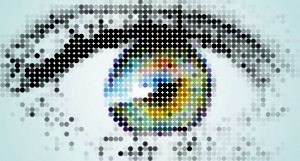Why Is Something As Important As Viewability Being Defined So Weakly?
by on 14th May 2014 in News


Daniel Shaw, founder at Encore Digital, asks does half an ad for one second, sound like viewable from any perspective (other than the digital media world)?
I think it’s safe to say that viewability as a topic has become a mainstream subject (certainly judging by the amount of coverage it’s getting in the press and at the various trade events). Which is a good thing. It’s an important subject and one that should be given air-time. What’s more surprising is the nature of the conversations.
There are plenty of people talking about how easily viewable impressions can become an acceptable trading currency. And plenty of research citing average viewable stats. What seems to be missing is the question of why on earth something so important is being allowed to be defined so weakly? With so little push back from marketers.
What I am referring to is the standard being discussed of half an ad being in view for one second or more. Half an ad for one second.
Does that sound like viewable from any perspective (other than the digital media world)? Why aren’t people pushing for something much more in line with common sense? Let’s start by at least making the whole ad need to be viewable. And maybe make it for at least a couple of seconds so viewable and ‘possibly seen’ aren’t completely disconnected.
I am a realist as well (sometimes) and recognise that any new standard needs to be palatable to all. I’m just not sure it needs to be this low a start point. Of course there will be publishers who fear any more stringent definition will cause them real challenges. We are working in an industry where there is far too much supply.
A proper definition of viewable may well result in plenty of publishers having significantly less sellable ads. But if they see their numbers fall by 30 – 40%, they will only be losing the ads that are at the bottom of the yield stack. They certainly won’t lose anywhere near that level of revenue.
But this is really about the advertisers. Properly defined viewable impressions (I am going to suggest the whole ad for three seconds is the benchmark to start with) will result in better performance (as a side note we have seen increased CTR’s when we buy only viewable impressions – and that’s at the current industry accepted levels.
If we revised this it can only increase more. Nobody seems to expect 40% better performance of you eliminate the 40% of non-viewable impressions. But shouldn’t they? It does make sense. If viewable is properly defined and reflects the true meaning of the word)
Such a low definition of viewable also does nothing to advance the argument that digital media isn’t all about measurable, performance-driven marketing. Brand budgets won’t move to the digital environment until we start to take the needs of that type of campaign seriously. And this comically low (yet heading towards seemingly becoming an unchallenged standard) definition of viewability won’t cut it.
Brand marketing budget has been slow to move over to digital for the fear of the inability to create true brand awareness. Would TV ad spend be as high if the ads were shown for 15 seconds, on half of the screen with the volume off?
Digital is handicapping itself by setting the bar this low to show true view-ability, the quicker it grows up the quicker it can prove itself.
Next time you escape the digital marketing bubble for a few hours and can have some time with friends or family, try to lighten the mood and ask them what viewable means in normal life. I bet whatever they describe doesn’t include only possible seeing half of something for a fleeting moment.
Ad VerificationAdvertiserViewability








Follow ExchangeWire